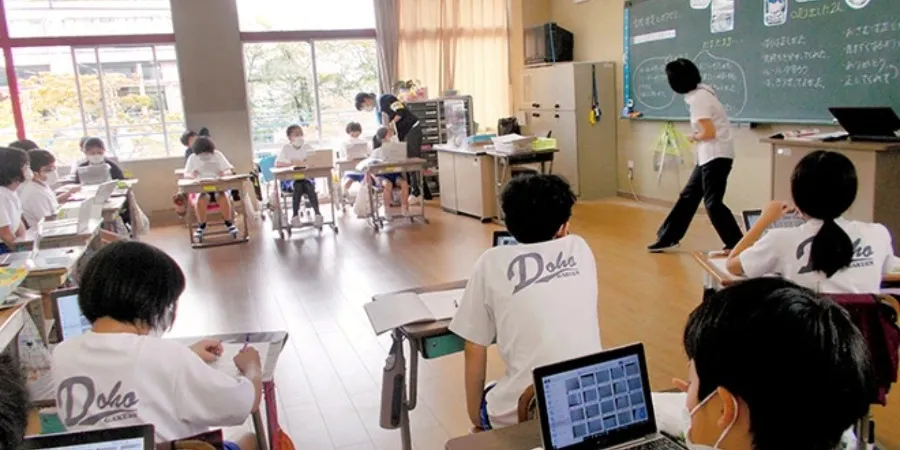Japanese Education System: Advanced Methods and Highlights
Referring to Japan, people often think of a country with a rich culture and outstanding development in the fields of technology and economics, not only possessing an advanced education system but also being highly regarded.

High prices due to unique educational methods. In particular, the education system is rated third in the world. Japanese education not only provides knowledge but also trains morality, and life skills and fosters creative thinking for the young generation.
Today's article will take you on a journey to discover the special features that create the strength of Japanese education, explaining why this country always reaps many achievements in the field of education and the secrets of the determination behind excellent Japanese students. So what are you waiting for? Let's join GoEMON to learn about the outstanding features of Japanese education.
1. Education System Structure
The Japanese education system includes all levels from kindergarten to university. Specifically, the structure of the Japanese education system is as follows:
- Kindergarten (Yochien): Children from 3 to 6 years old.
- Elementary school (Shougakkou): 6 years, from grade 1 to grade 6.
- Middle school (Chuugakkou): 3 years, from grade 7 to grade 9.
- High school (Koukou): 3 years, from grade 10 to grade 12.
- University (Daigaku): 4 years or more, depending on major.
2. Advanced Educational Methods
Japan focuses on Comprehensive Education, not only focusing on academic knowledge but also cultivating students' personality and life skills. From a young age, students are taught the importance of ethics, responsibility, solidarity, and mutual respect.
The active Learning Method is widely applied in Japanese schools. Instead of passive learning, students participate in real-life projects, group work, and problem-solving. In addition, students are encouraged to research, explore and think independently instead of passively learning from textbooks. These help develop creative thinking and enhance students' teamwork abilities.
Japan has always been a pioneer in applying technology to education. Smart classrooms, using tablets, the internet and modern educational software, help students access knowledge more easily and effectively.
Source image: www.asahi.com
3. Highlights of the Japanese Education System
One of the highlights of the Japanese education system is the spirit of discipline and responsibility. Japanese students are educated about the importance of following regulations and being self-disciplined in studying and living. They often clean classrooms and schools themselves without the intervention of cleaning staff. That's why Japan is a country with a very low dropout rate and high academic achievement: Japanese students often score high on international exams such as PISA, and TIMSS,...
Japan has an extremely rich system of extracurricular activities, from sports, arts, and science clubs to volunteer activities. These activities help students develop comprehensively, and practice health and social skills.
Japanese parents are very interested in their children's education and often coordinate with schools to educate their children.
Teachers in Japan are well-trained and must always improve their professional qualifications. They not only teach knowledge but are also guides, psychological, and moral supports for students.
Source image: JAPAN Educational Travel
The Japanese education system not only stands out for its advanced educational methods but is also an example of discipline, responsibility, and comprehensive development. This is truly an educational model worth learning and researching. Lessons from Japan can be a source of inspiration to improve education systems in other countries, towards the goal of comprehensive and sustainable human development.
Don't hesitate to follow GoEMON to update more useful information!